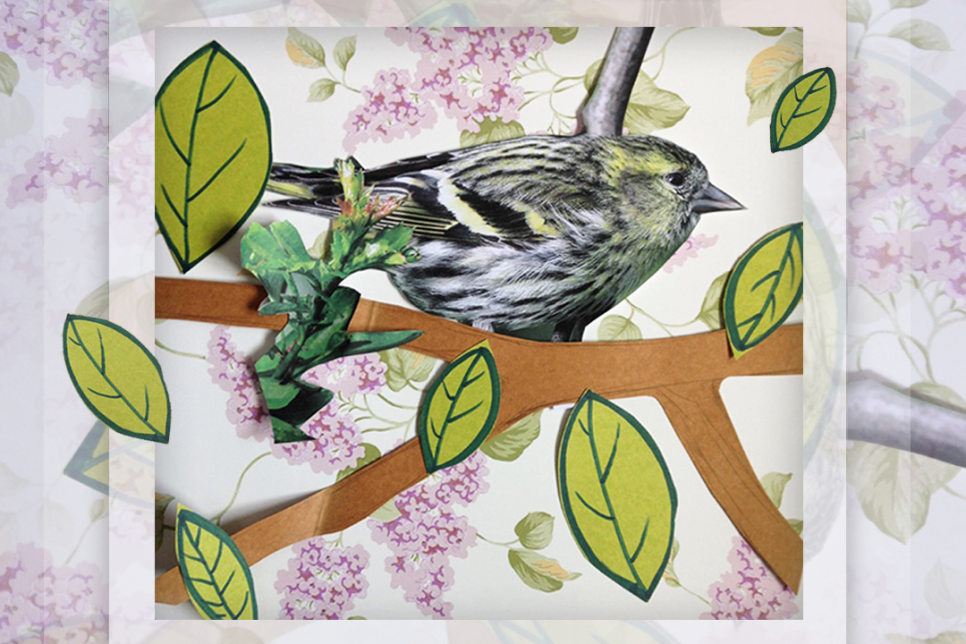In April 2020, as the global lockdown took effect, a group of 42 researchers formed the COVID-19 Suicide Prevention group outlining that "These are unprecedented times. The pandemic will cause distress and leave many vulnerable. Mental health consequences are likely to be present for longer and peak later than the actual pandemic.” (1)
Looking at the data from the UK COVID-19 Social Study run by University College London, a panel study of over 90,000 respondents focusing on the psychological and social experiences of adults living in the UK during the Covid-19 pandemic,it is evident that many of us have experienced higher levels of stress, anxiety and depression in a way we have never experienced it before.
How have participatory arts organisations and artists working in the arts and health sector responded to the pandemic in Wales and beyond?
How can the arts contribute to the ongoing impact of the pandemic, particularly in relation to mental well-being?
‘Arts and Health’ is a growing area of work globally and there are numerous regional and national networks across the UK, which have formed closer working relationshipsbecause of the lockdown. The Wales Arts Health & Wellbeing Network (WAHWN) was instigated in 2013 by a small group of arts and health professionals aimed at creating networking, training and sharing opportunities.
Across the UK there are sister networks: Arts Culture Health and Wellbeing Scotland, Arts Care in Northern Ireland, the Culture, Health and Wellbeing Alliance in England. Outside of the UK, our closest neighbours in Ireland have a well-established arts and health network run by Waterford Healing Arts Trust and, similar to WAHWN, it contains arts organisations, local authorities and HSE teams, usually based in hospitals, from across Ireland.
In May, the Virtual Arts in Health Conference, ‘Art Responders in Global Health Crisis: Covid-19’ was organised by Arts in Medicine (US). Professionals from 37 countries attended, including colleagues in Wales, the UK and Ireland. Most presentations were made by US colleagues, working in academia, therapeutic professions and community arts organisations, but we also heard from international colleagues in the question and answer and chat sessions. The types of responses coming from the participatory arts sector was similar across the world and they generally fit into two primary types of response:
-
Participatory arts projects addressed to support people’s health and well-being directly;
-
Creative expressions of people’s experiences of the pandemic and lockdown.
Whilst individuals and communities across the world have created concerts, murals and other artworks in their homes, gardens, streets and cities, there has also been a significant organisational shift to online arts programmes. Activities that used to take place in a room with participants have gone live on Facebook, Instagram, Zoom and other internet platforms. However, a common issue across the world has been digital exclusion. This has been more widespread in countries in Africa where even access to electricity can be difficult at times, before the specific challenges of digital exclusion: people don’t own a device, or don’t have data packages to support lengthy online engagement or they don’t have the skills to engage online (2). In rural parts of Wales, many people still don’t even have access to reliable internet signal (3). This means that engaging in the arts, either as an audience member or as a participant can be very exclusive.
Arts organisations across Wales, the UK and Ireland have innovated to ensure their communities remain connected through a range of ‘doorstep arts’ projects, in which art materials have been delivered directly to participants, whilst other projects have taken place over the phone and through the postal service. Although lockdown has meant we have all been physically isolated, the participatory arts sector has worked hard to ensure people do not have to be socially isolated. In many cases this has provided a vital lifeline to connect communities. This has been extended to hospital wards where artists have transformed spaces and experiences for patients. Please watch the video showing some of this valuable work on WAHWN’s vimeo page.
As we begin to slowly move out of lockdown many participatory arts organisations are in conversation with local health and social care bodies to explore how the arts can support the recovery and healing phase that we now enter. In Wales, with our strategic focus on well-being as part of our Well-being of Future Generations Act (2015), all public bodies have a legal duty to consider the well-being of our communities as we emerge from this transformative period. The arts, and the participatory arts (both in community and health settings) sector in particular, can help to rebuild a vibrant culture; cohesive communities that are healthy and resilient; globally responsible and sustainable lifestyles; and equality for all citizens.
Further information:
The establishment of WAHWN has taken place alongside the developing relationships between ACW and Wales NHS. The ACW Arts and Health Mapping report was published in 2018 and demonstrates a commitment to building successful practice in this area and supporting WAHWN to develop its services and strengthen the evidence base. Alongside this, ACW and Welsh NHS Confederation produced a Memorandum Of Understanding (MOU), which in turn has led to funding being made available for a member of staff to be employed in each local health board to undertake a role that ensures arts and health initiatives are embedded across all areas of Wales.
Arts and Health Ireland was established in 2011, the network is supported by Arts Council of Ireland and the Health Service Executive (HSE).
Arts in Medicine US is based at University of Florida. The conference was also supported by the Global Brain Health Institute, University of California.

